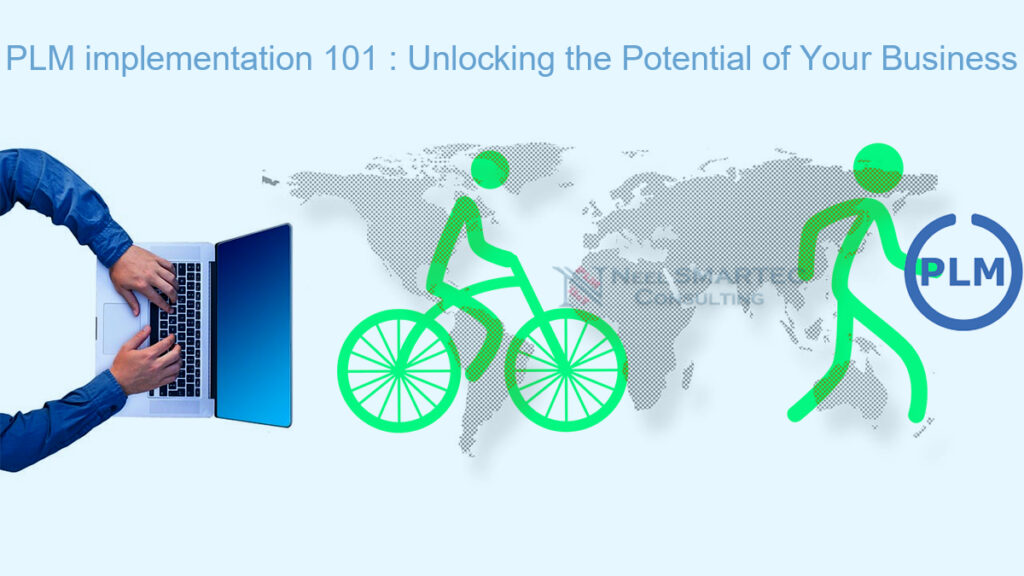PLM Implementation 101: Unlocking the Potential of Your Business delves into the transformative power of Product Lifecycle Management. By streamlining processes, enhancing collaboration, and optimizing product data, PLM empowers businesses to innovate efficiently and stay competitive in today’s dynamic market. Discover how PLM can revolutionize your operations.

Introduction
In today’s fast-paced and highly competitive business environment, Product Lifecycle Management (PLM) has become essential for companies striving to maintain a competitive edge. As a PLM consultant with 20 years of experience, I’ve seen firsthand how effective PLM implementation can transform businesses. Let’s delve into the basics of PLM implementation, providing a clear, straightforward guide to help you understand and embrace this powerful tool.
What is PLM?
Product Lifecycle Management (PLM) is a strategic approach to managing a product’s journey from inception through design, manufacturing, service, and disposal. It integrates people, processes, business systems, and information to streamline product development and bring innovative products to market faster and more efficiently.
Why Implement PLM?
- Enhanced Collaboration: PLM fosters collaboration across departments, ensuring everyone is on the same page. This unified approach reduces errors and accelerates the development process.
- Improved Efficiency: By automating repetitive tasks and standardizing processes, PLM minimizes wasted time and resources, leading to cost savings and increased productivity.
- Better Quality: With real-time data and analytics, PLM helps identify and address quality issues early, ensuring that products meet high standards.
- Faster Time-to-Market: Streamlined processes and improved collaboration enable quicker decision-making and faster product launches.
- Regulatory Compliance: PLM systems maintain comprehensive records, making it easier to comply with industry regulations and standards.
Key Steps to Successful PLM Implementation
- Define Your Goals: Understand what you want to achieve with PLM. Whether it’s reducing time-to-market, improving product quality, or enhancing collaboration, clear goals will guide your implementation strategy.
- Choose the Right PLM Solution: Not all PLM systems are created equal. Evaluate different options based on your specific needs, budget, and existing IT infrastructure. Consider scalability to ensure the solution can grow with your business.
- Assemble a Dedicated Team: Successful PLM implementation requires a cross-functional team with representatives from IT, engineering, manufacturing, and other key departments. This team will drive the project and ensure all perspectives are considered. Typically, a PLM Champion, often a senior leader from the engineering or manufacturing department, will lead the charge, ensuring alignment with strategic goals.
- Develop a Detailed Plan: A well-thought-out plan is crucial. Outline the implementation phases, set realistic timelines, and allocate resources effectively. Include milestones and KPIs to track progress.
- Data Migration and Integration: One of the most challenging aspects of PLM implementation is migrating existing data and integrating it with other systems. Prepare, structure, and verify data to guarantee precision. Work closely with your IT team to ensure seamless integration.
- Engage NPD/NPI Teams: The New Product Development (NPD) and New Product Introduction (NPI) teams are pivotal in PLM implementation. Their insights into the product lifecycle, from concept to launch, ensure that the PLM system aligns with actual workflows and needs, enhancing its effectiveness and adoption.
- Training and Change Management: For PLM to be effective, your team needs to know how to use it. Provide comprehensive training and support to ensure everyone is comfortable with the new system. Foster a culture of change by communicating the benefits and addressing any concerns.
- Pilot Testing: Before a full-scale rollout, conduct pilot testing with a small group of users. This helps identify potential issues and allows for adjustments before the system goes live.
- Go Live and Monitor: Once you’re ready, implement the PLM system across the organization. Monitor its performance closely and be prepared to make ongoing adjustments based on user feedback and changing business needs.
If you’re an SME starting your digital transformation journey, explore OpenBOM PLM. For discrete manufacturers, kick-start with PTC Windchill PLM. Dive deeper into PLM with our award-winning ‘PLM with IIoT‘ book. Explore Industry 4.0 with our ‘Smart Automation‘ book, or embrace Industry 5.0 with ‘Industry 5.0‘ book
Overcoming Common Challenges
- Resistance to Change: Change can be daunting. Engage with your team early and often, highlighting the benefits and providing reassurance.
- Data Complexity: Migrating data can be complex. Invest time in data preparation and consider seeking external expertise if needed.
- Customization vs. Standardization: Balancing the need for customization with the benefits of standardized processes is key. Opt for a solution that offers flexibility without sacrificing efficiency.
- Cost Management: PLM implementation is an investment. Manage costs by prioritizing features that align with your goals and scaling the implementation over time.
Conclusion
Implementing a PLM system is a transformative journey that can significantly enhance your business operations. By following these steps and addressing common challenges, you can unlock the full potential of PLM, driving innovation, efficiency, and growth. At Neelsmartec, we are committed to helping businesses navigate this journey, leveraging our two decades of expertise to ensure your PLM implementation is successful and impactful.
Ready to take the next step? Join us on this transformative journey to elevate your business to new heights.

